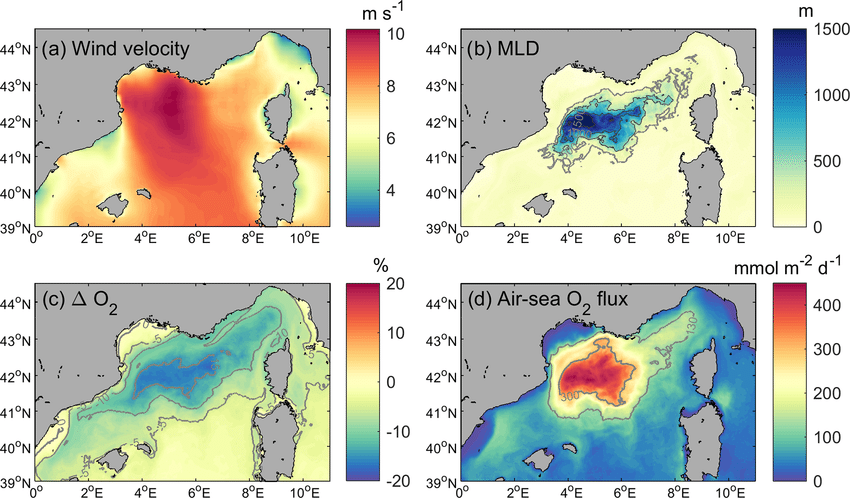Recent publication : Oxygen budget of the north-western Mediterranean deep- convection region.
Caroline Ulses, Claude Estournel, Marine Fourrier, Laurent Coppola, Faycal Kessouri, Dominique Lefevre, Patrick Marsaleix; 2021 Biogeosciences 18(3):937-960 DOI:10.5194/bg-18-937-2021
The north-western Mediterranean deep convection plays a crucial role in the general circulation and biogeochemical cycles of the Mediterranean Sea. The DEWEX (DEnse Water EXperiment) project aimed to better understand this role through an intensive observation platform combined with a modelling framework. We developed a three-dimensional coupled physical and biogeochemical model to estimate the cycling and budget of dissolved oxygen in the entire north-western Mediterranean deep-convection area over the period September 2012 to September 2013. After showing that the simulated dissolved oxygen concentrations are in a good agreement with the in situ data collected from research cruises and Argo floats, we analyse the seasonal cycle of the air–sea oxygen exchanges, as well as physical and biogeochemical oxygen fluxes, and we estimate an annual oxygen budget. Our study indicates that the annual air-to-sea fluxes in the deep-convection area amounted to 20 molm-2yr-1. A total of 88 % of the annual uptake of atmospheric oxygen, i.e. 18 mol m−2, occurred during the intense vertical mixing period. The model shows that an amount of 27 mol m−2 of oxygen, injected at the sea surface and produced through photosynthesis, was transferred under the euphotic layer, mainly during deep convection. An amount of 20 mol m−2 of oxygen was then gradually exported in the aphotic layers to the south and west of the western basin, notably, through the spreading of dense waters recently formed. The decline in the deep-convection intensity in this region predicted by the end of the century in recent projections may have important consequences on the overall uptake of atmospheric oxygen in the Mediterranean Sea and on the oxygen exchanges with the Atlantic Ocean, which appear necessary to better quantify in the context of the expansion of low-oxygen zones.





